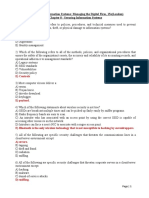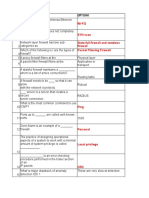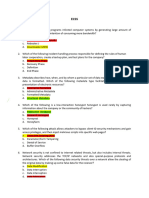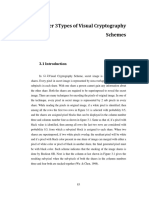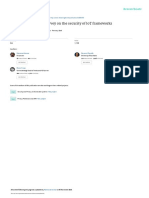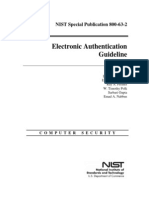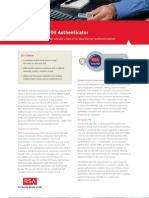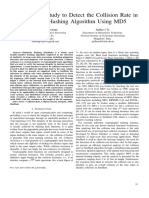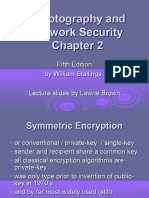0% found this document useful (0 votes)
274 views17 pagesNetwork Security
The document describes network security concepts including confidentiality, non-repudiation, authentication, and availability as they relate to information security services. It also discusses security threats like hacking, cracking, and spoofing. Common security methods are identified including logon, data communication, and administrative controls. Examples of attacks like denial of service and types of firewall technologies are provided.
Uploaded by
aqprincess89Copyright
© Attribution Non-Commercial (BY-NC)
We take content rights seriously. If you suspect this is your content, claim it here.
Available Formats
Download as DOC, PDF, TXT or read online on Scribd
0% found this document useful (0 votes)
274 views17 pagesNetwork Security
The document describes network security concepts including confidentiality, non-repudiation, authentication, and availability as they relate to information security services. It also discusses security threats like hacking, cracking, and spoofing. Common security methods are identified including logon, data communication, and administrative controls. Examples of attacks like denial of service and types of firewall technologies are provided.
Uploaded by
aqprincess89Copyright
© Attribution Non-Commercial (BY-NC)
We take content rights seriously. If you suspect this is your content, claim it here.
Available Formats
Download as DOC, PDF, TXT or read online on Scribd
/ 17







